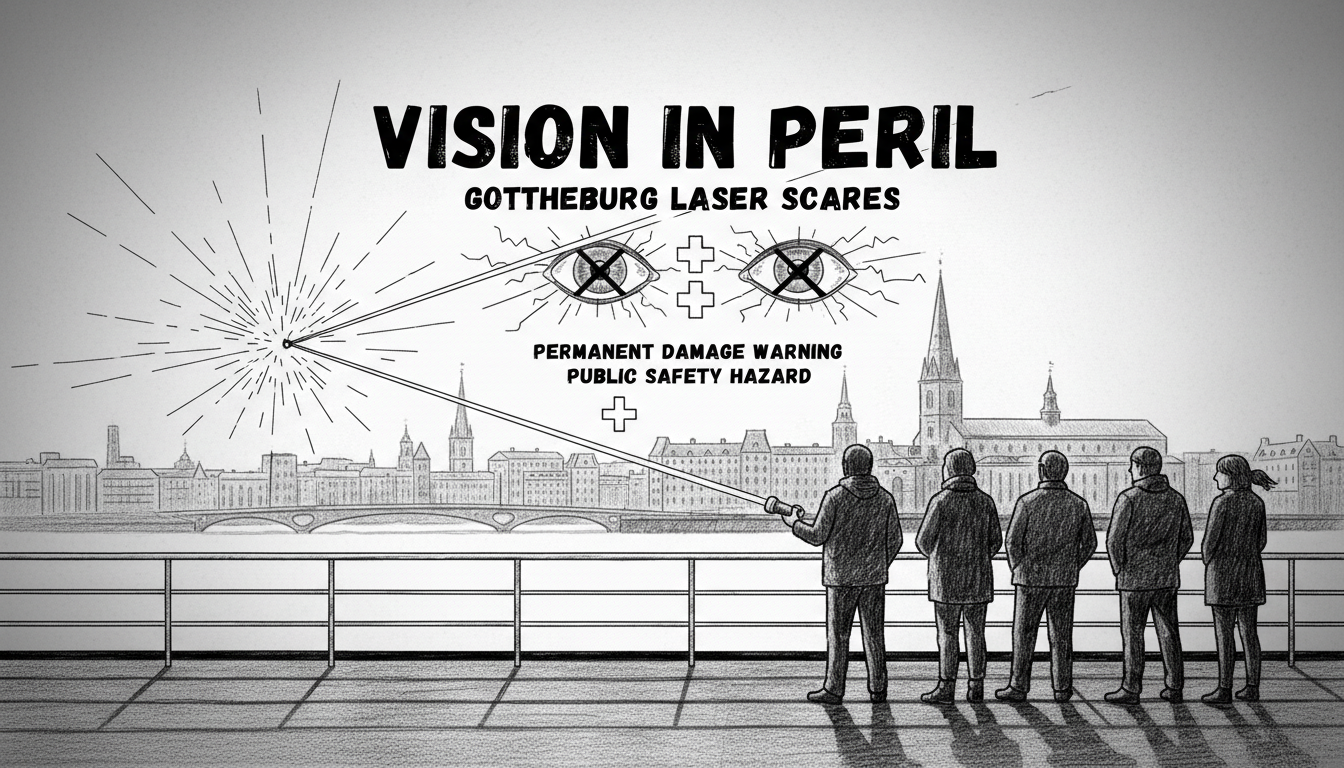Green laser attacks targeting ferry traffic forced the suspension of river crossings in Gothenburg this weekend. The dangerous trend continues as 13 teenagers simultaneously visited emergency rooms last week after playing with laser pointers. Medical experts confirm these devices pose serious and permanent vision risks.
Maria Bitziou, a senior ophthalmologist at Sahlgrenska University Hospital, states the concerns are justified. Laser radiation can damage the retina in ways that cause permanent vision loss. The injuries manifest differently depending on severity, with some victims experiencing blurred central vision from burns to the macula.
The macula handles our central sight, and damage here directly impairs vision. The extent of damage depends on laser strength and exposure time. While the body can sometimes heal minor injuries, permanent damage remains untreatable once it occurs.
Many injuries happen during play. The recent case of 13 teenagers visiting emergency services together highlights how common these accidents have become. But the danger extends beyond direct eye exposure. Laser pointers can create traffic hazards by blinding drivers at considerable distances.
Maria Bitziou explains the public safety implications. Laser beams can travel several kilometers depending on their power. A standard 5-milliwatt laser can reach up to 3 kilometers. The new concerning trend involves targeting pilots, bus drivers, tram operators, and boat captains, potentially endangering many people simultaneously.
Sweden's Radiation Safety Authority regulates laser use in public spaces, classifying devices based on eye damage risk. Weaker laser pointers remain freely available, but higher-classified devices require permits for both possession and import. Class 3R, 3B, and 4 lasers should not be sold to the general public.
Marilla Altersten, an investigator at the Radiation Safety Authority, warns about imported devices. Many lasers purchased online or abroad may carry incorrect labeling. Unclassified devices pose particular risks as their true power remains unknown.
Both red and green lasers appear in pointers, with green being more easily perceived by human eyes. However, color doesn't determine danger—laser strength does. Most people avoid permanent damage because our bodies instinctively react to strong light by blinking or turning away.
All 13 teenagers from last week's incident recovered without permanent damage. But temporary blinding effects can persist for hours after exposure. Maria Bitziou advises seeking medical attention if blurred vision continues beyond several hours, as this indicates potential retinal changes requiring examination.
The recent incidents reveal a growing public safety concern that combines individual risk with broader transportation dangers. As laser technology becomes more accessible, public awareness about proper use becomes increasingly crucial for community safety.

